1) Battery pack design: After a lot of experimenting I have settled on a design that allows a single 18650 based phone battery pack to be built into the left hand end of the DG. It just fits with <1mm to spare. This can be charged up using any mobile phone charger. The USB lead emerging from left hand end can either be plugged directly into for example in iPad, drawing power from the iPad as in previous versions or plugged into the USB socket of the internal battery pack to provide power if you want to use the DG wirelessly i.e. connected to the iPad via a plug-in USB MIDI module. These plug into the MIDI sockets now provided at the crank end. Examples of such Bluetooth MIDI transmitters are the Yamaha MD-BT01 and the WIDI-Master. Photos below.
2) Tuning options: With a lot of help from people who know what they are talking about, I am working on an alternative method of tuning. Instead of the 14 set tunings which tell you how to set up each virtual string on the attached ipad/phone, in this variant there are just 4 basic tunings.
- You then use keys to increase all 4 strings by one octave, or move them down one octave.
- In addition a capo allows you to move the trompette and drone strings up or down by one full tone.
This gives you a large number of combinations, similar to the original 14, but presented to you in a way that some players might prefer, more in keeping with a real hurdy gurdy.
Still debugging this but it does work and will be offered as an alternative code upgrade soon.
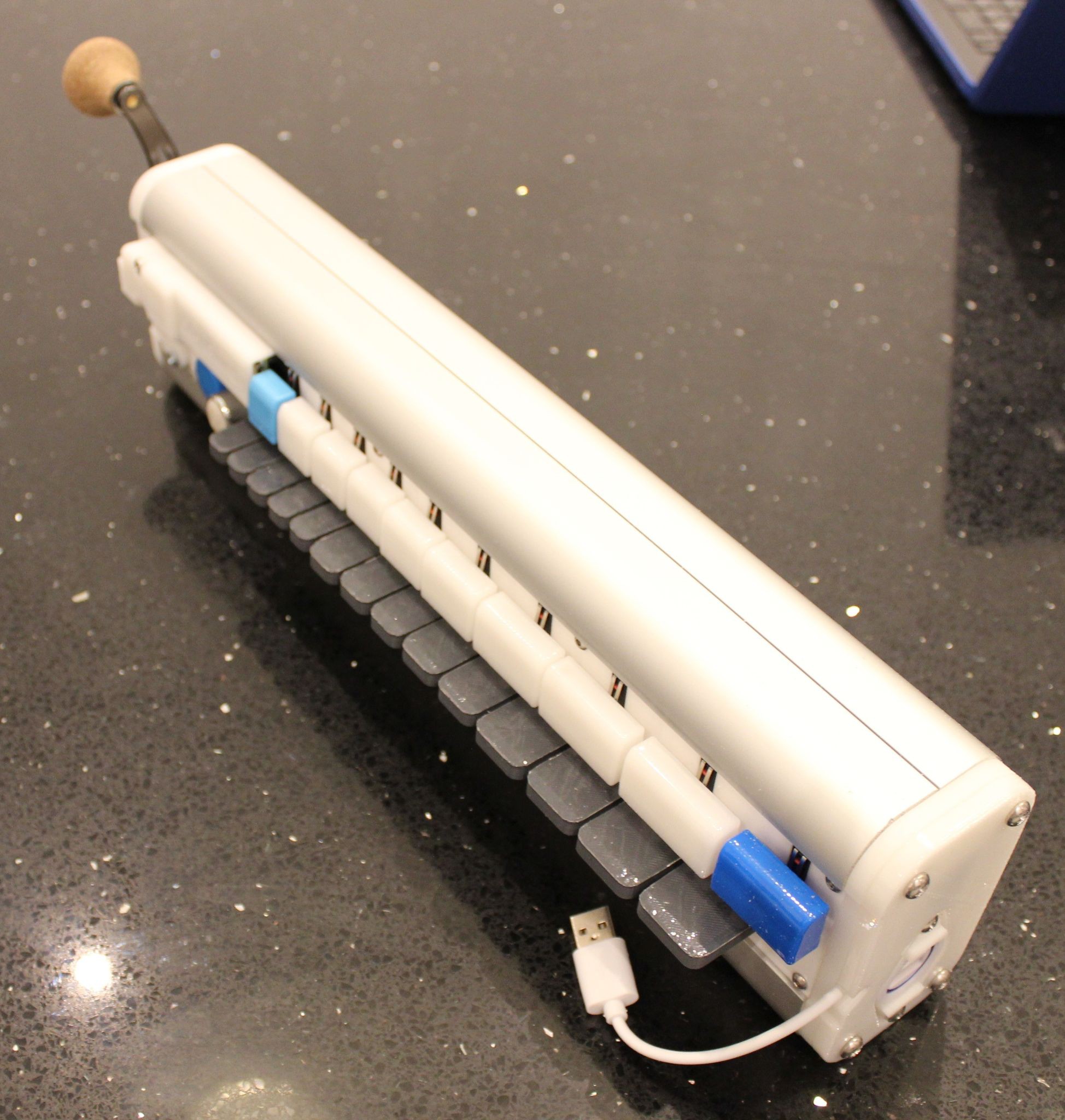
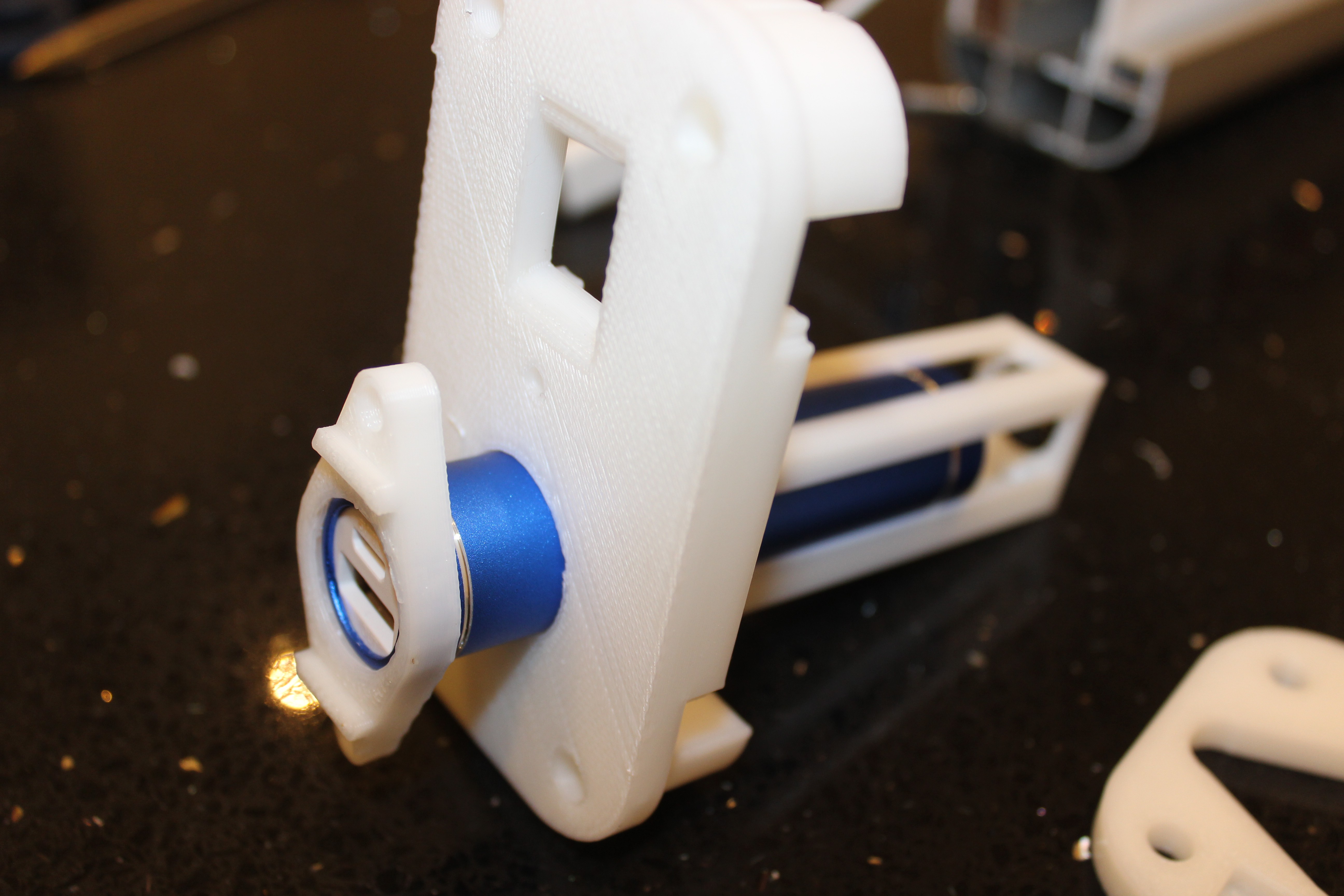
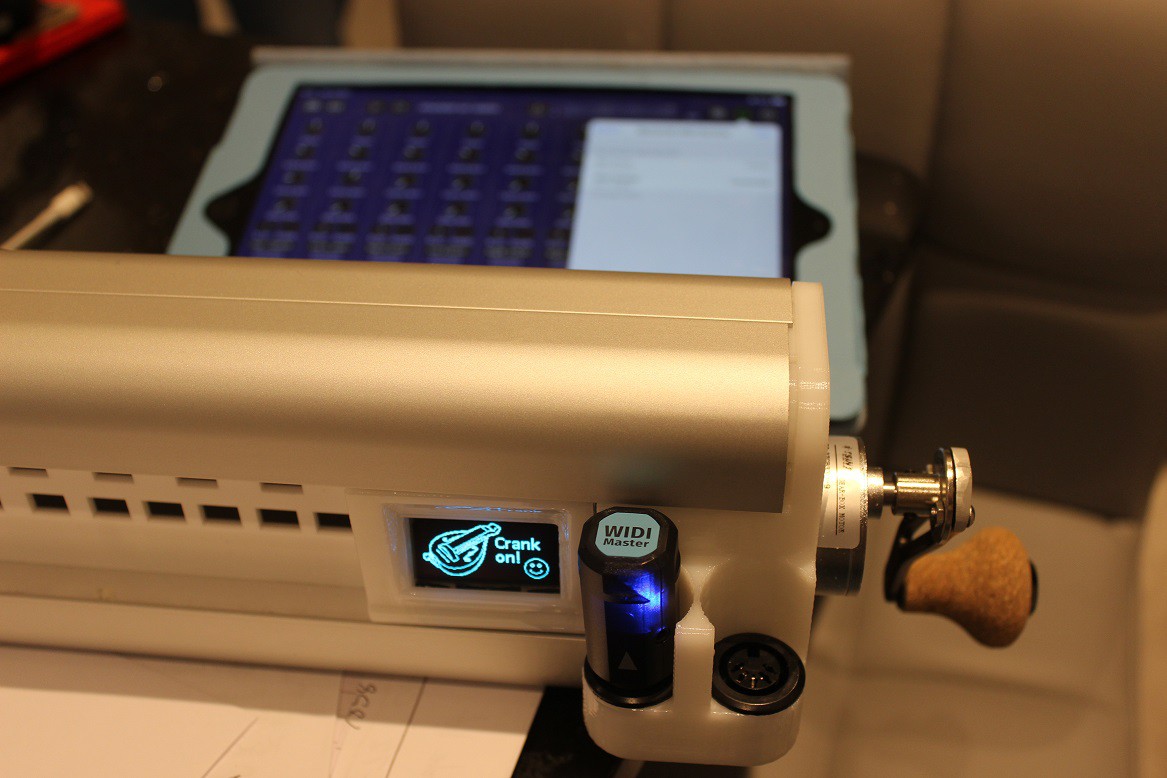
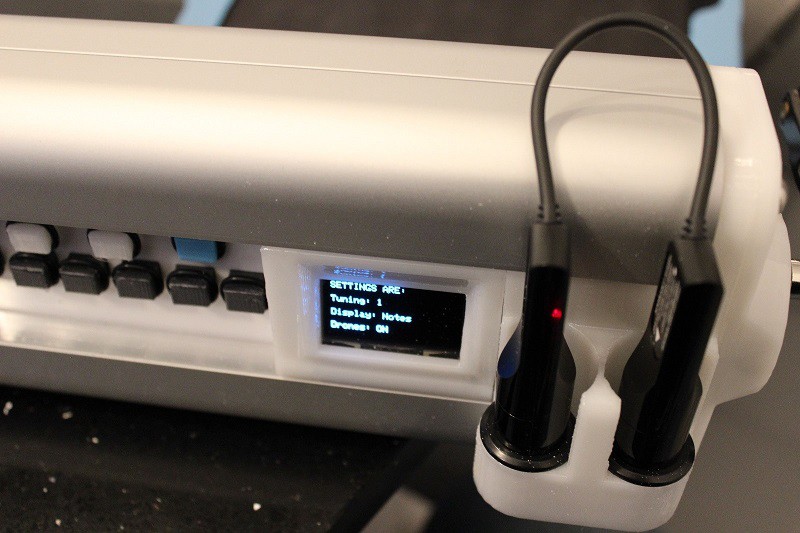
3) Alternative keybox design by David Jacobs: This design is laser cut from 3mm ply and files have been attached with more photos in the file download section. Construction manual to follow. This uses same DG software but instead of using microswitches (which connect solder pins on the Teensy microcontroller to ground when pressed), it uses individual wires running to long or short brass contacts on each key. When the key is pressed they contact a metal string under tension so completing the circuit to ground. This gives the keybox a degree of feel that is more like that of a real hurdy gurdy. Images provided below. More in the downloadable file.
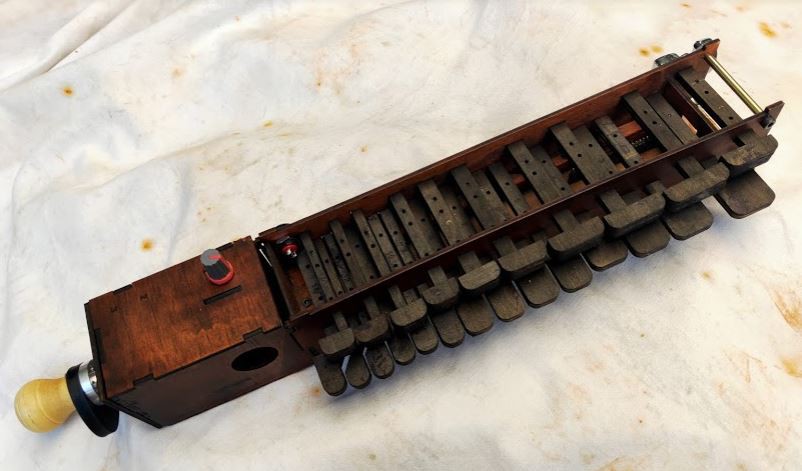
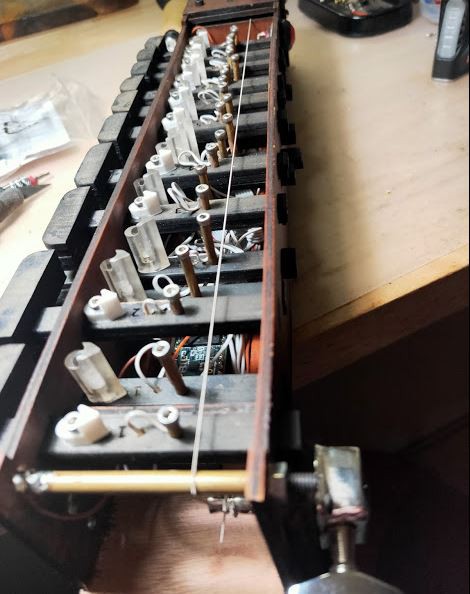
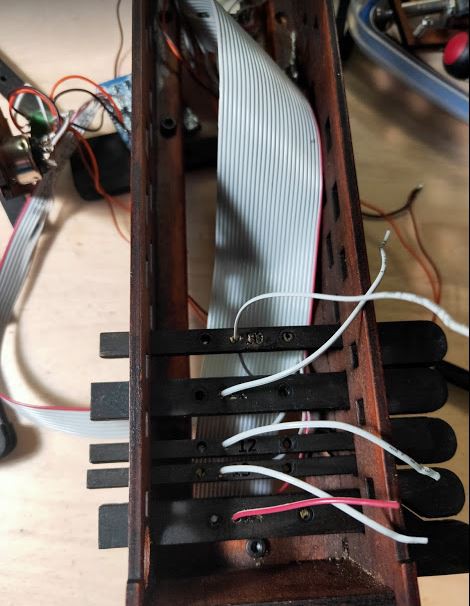
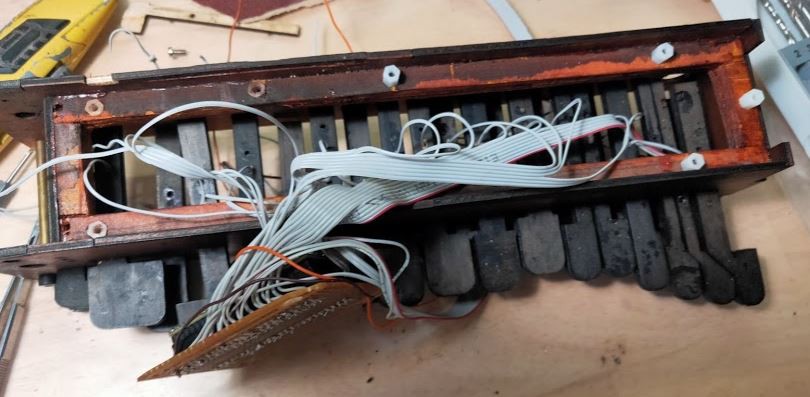
 XenonJohn
XenonJohn
Discussions
Become a Hackaday.io Member
Create an account to leave a comment. Already have an account? Log In.
Oh wow amazing ! Thanks to all the contributors !
Are you sure? yes | no